A new paper by Professor Justin Bronk, published by the Royal United Services Institute (RUSI), argues that NATO should not attempt to replace traditional military firepower with massed drones.
Drawing on lessons from Ukraine’s ongoing war with Russia, the piece warns that uncrewed aerial systems (UAS) cannot substitute for the role played by airpower, artillery and armoured forces in high-intensity warfare, according to the publication.
In the article titled NATO Should Not Replace Traditional Firepower with ‘Drones’, Bronk writes that “it would be a mistake for NATO forces to rely heavily on massed small UAS and long range OWA drones to replace traditional weapons systems in pursuit of improved lethality.” While Ukraine has made extensive and innovative use of first-person view (FPV) drones and one-way attack (OWA) systems, he argues that this has been driven by necessity and is not a model Western militaries can or should emulate.
Russia, the paper notes, has become the world leader in counter-UAS capabilities. “Only a small fraction of the huge volumes of drones launched by Ukrainian forces reach their targets, and a still smaller proportion achieve decisive damage when they do,” Bronk observes. He adds that Russia’s integrated use of jamming, air defences and electronic warfare significantly limits the impact of massed drone attacks.
Bronk also warns that Western procurement systems and regulatory environments are poorly suited to replicating Ukraine’s wartime drone innovation and production. “Western forces aiming to transform their lethality using similar UAS-dependent tactics are starting from a far lower base than Ukrainian forces today,” he writes.
Instead of overcommitting to drone-based capabilities, the paper argues NATO should invest in enabling drones to support traditional platforms. UAS, Bronk suggests, can be used to saturate enemy air defences or conduct electronic attack in support of long-range fires and manned air operations. “There are many ways that UAS can and already do contribute to NATO’s force structure and capabilities, but generally they are most potent as a means to enable artillery and aircraft to strike targets responsively,” he writes.
Readers can access the full paper on the RUSI website: NATO Should Not Replace Traditional Firepower with ‘Drones’.


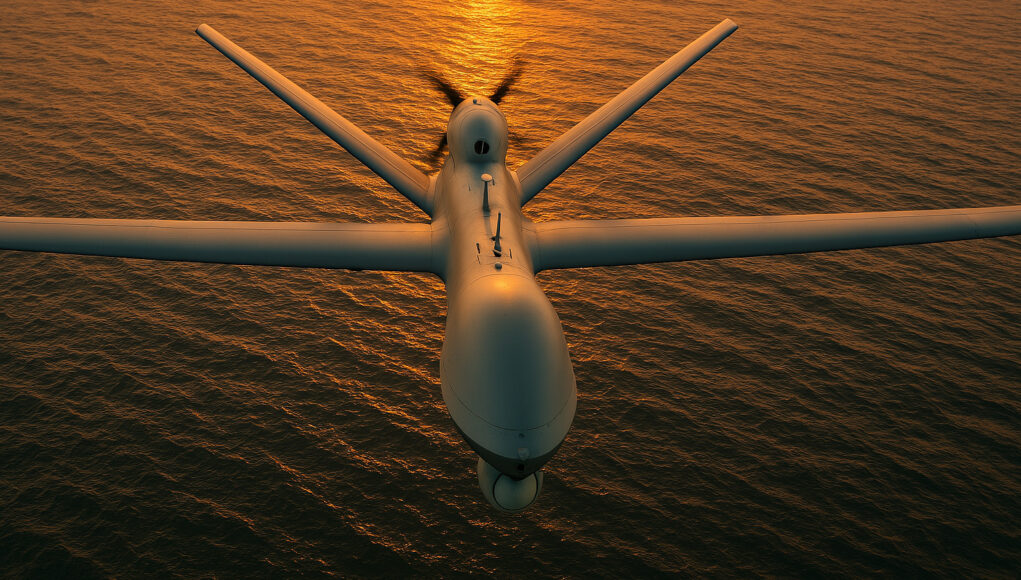
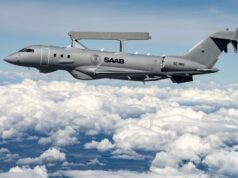
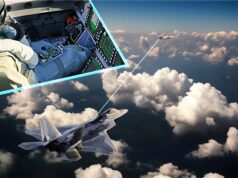
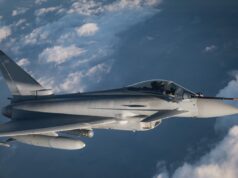
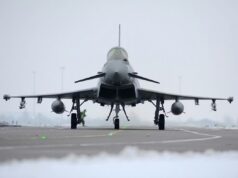
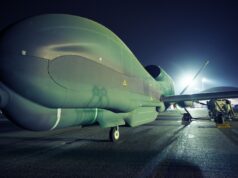

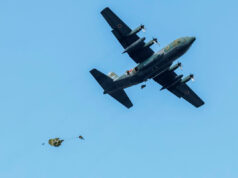


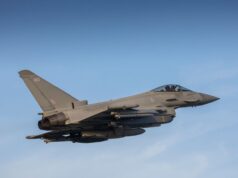

Denys Davydov’s youtube channel recently showed a brief tank battle between a UKR T-64 and a Russian (assumed T-72) that had been clad with ‘drone’ protection. The T-64 won the battle. The T-72 was too buttoned down in the cladding to turn its turret
OK, at the moment, drones have the battlefield at a standstill. IMHO, there will be good enough counter-measures in the future that maneuver warfare can happen again.
Thing is you have to able to cover both bases.
Drones are seen as cheap force multipliers – in the UK that is an obsession as there is no significant new money on the table.
But the big kinetic stuff still has its uses.
Very true.
Drones do have an Achilles heel through electronic warfare. Jamming is still the main defence against RF controlled drones. It is initially a matter of deciphering the data-link control, that smashing out white noise on a corresponding frequency. Which will work for off the shelf “toy” drones, not so much against fibre optic controlled drones. But as the Ukraine War has progressed we are seeing electronic counter-counter measures being employed by both sides for their RF controlled drones. Where the frequencies used by the data link are rolling through a predetermined pattern or using a day code system that incorporates frequency hopping. So wideband jammers will be needed. Failing that we are starting to see directed energy weapons become a battlefield reality. Russia have been seen using a Chinese 4×4 mounting a laser. I’m sure Ukraine wont be far behind. It will be the same for directed microwave weapons, I’m pretty sure both sides will be employing them sooner rather than later.
The packaging for these systems is still way too large for mounting on say a MBT, so will require a dedicated support vehicle. Where it provides a bubble over the operating vehicles.
Although today due to drones there are many detractors of MBTs. There simply is not another asset that can do the same role or take the punishment. Yes drones are serious threat, but they can be countered.
The enemy will always find and attack your weakness, if our forces are powerful but scattered their forces may be weaker but more dispersed. Their drones will hit places we haven’t thought to protect, or don’t have the machines to defend. We need to have the ability to react to whatever our enemy throws at us. Right now we need to build up our conventional forces because we know we haven’t got the numbers to fight Russia. Conventional forces are also slow to produce and difficult to produce under bombardment. But we also need to be ready to turn out large number of drones if required. Britain should be building huge numbers of drones now not for us but for the Ukraine, where they will be both effective and tested in war. If Britain then goes toe to toe with Russia we will have an idea of what works and the capacity to produce it.
Well said👍👌
In Ukraine, i rend to believe that électronique warfare capabilities are chineese on the Russian side. It would make sense that the mastery of civilian radio access network of Huawei would boost limited Russian knowledge in that domain. And then, we can only contempt in disbelief what liberals have achieved, by donating the capabilities of western workers and engineers to hostile regimes. Where are they know, the promoters of globalism who send our kids to death and enforce dictators?
The Soviet Union and then Russia have always been very good at electronic warfare for both defensive and offensive actions. It forms a leg of their concept of operations that is part of the greater Maskirovka or misdirection. I wouldn’t be surprised in both Russia and China are working in collaboration. Where Russia brings the experience and China brings the manufacturing.
I tend to believe that may be Russia wants to do things, but the engineering capabilities of China in telecomm exceed by far what Russia can do in terms of new beam types. And it is also better than what Europe can do. USA is most likely out of the picture, for they have no telecom capabilities so to speak. The biggest failure of TR4 of the F35 comes from their ongoing weakness in Telco.
Nobody has said to stop building traditional equipment!
However, we do need to complement it with force multipliers like drones, and we must get on the bandwagon and build drones and have drone platoons, companies in the Army and RM
If the British Army were to ignore the use of some of the things we are witnessing, then they would regret it when setting foot on the battlefield
Drones were seen being used in several places of conflict, most recently in the Thailand-Cambodia dispute
We can’t afford to go shopping in the GUCCI store and still expect to win a battle
The tide has turned
Of course the elephant in the room is fully autonomous drones. Almost all drone counters are based on severing communications. A real shooting war between The USA and China will see armies of fully autonomous drones swarming the battlefield making their own kill decisions.
If we don’t have our own counter drones we will be slaughtered.
Justin Bronk is a smart guy and if we are talking about air to air drones he is probably right but on land small drones will become pervasive and they might be the first and only technology to truly challenge the infantry role in war.
We really need to start seriously engaging with China over this because building fleets of AI controlled slaughter bots is as bad an idea as biological weapons but we are rapidly heading there.
Asked if it was envisionned, a French general stated that in a full scale war, there would be no choice than remove men from the decision making, as it slowes down the Ooda loop. This is for Scorpion. You are refering to the bottom level, there would be action of the drone, but it is the same reasonning.
Discovery of AI playstyle has been insightfull for Chess players. I wonder if we have human bias that AI would target…
So attempt to work w/ China to stand athwart history and prevent the rise of destabilizing weapons technology? There is precedent–though in the end it didn’t succeed. The Japanese began fiddling w/ guns & gunpowder roughly around the time the Europeans did, but found the societal consequences unacceptable and effectively banned the technology for 250 years until Matthew Perry sailed into Tokyo Bay.
I’m not trying to be flippant as I agree that mindlessly jumping on the AI bandwagon and following–in the belief that it’s inevitable–that train to its conclusion . . . is a bad idea. (Despite clumsily mixing metaphors). “We” as a species do not “need” AI weapons–we want them because it will make killing & destruction more efficient & faster. Nuclear weapons literally offer the same commodities, though w/ obvious downsides.
So perhaps it’s nukes–not heretofore still-banned biological weapons–that offer the model. Arms control rather than attempts at prevention.
And yet because a single AI weapon–or even hundreds of them–cannot kill on a scale that a single nuclear one can (nor leave the lingering pain like one would in the form of radiation), I fear they do not carry the psychological “sting” that will be the catalyst for their control & regulation. No matter how many sci-fi movies we watch in which the robots kill us all, there is virtually zero hesitation in gov’t/mil circles against rapid development of AI-based weaponry.
And it shouldn’t surprise us. Just at the Japanese were unable to truly stave off guns, no major military figure in 1914 was calling for a prohibition on poison gas–let alone machine guns or rapid-firing artillery. Likewise, there was never a serious question that the A-bomb was going to be used in WWII.
For a taboo to develop over both chemical & nuclear arms, we–humankind–had to experience the pain of both first. Perhaps that’s what it will take with AI weapons.
It is a good and relevant paper. The main problem, as always, is a politicians inability to understand military matters, then fund it.
The drone war we are seeing in Ukraine is a result of the failure of both sides to achieve control of the air using obsolete aircraft vs SAMs. In the Israeli strike on Iran using 5th generation aircraft the SAMs were ineffective and 5th gen jets could do pretty much what they wanted to. The answer is fairly obvious for those with eyes to see. It isn’t massed drones.
Very good distinction made there–though I wouldn’t say there is no future for “massed drones.” As others have noted, UAS in general and armed battlefield drones in particular, have their role–and it’s growing. It’s just a matter of properly understanding it. I want to pull out what remaining hair I have whenever I hear layperson idiots (to inc. politicians) talk about “drones” making tanks, fast jets, aircraft carriers, subs, etc. “obsolete.”
You’re quite right to note that UAS feature prominent in Ukraine because of necessity. The Ukrainians have had to develop their UAS industry out of survival necessity so, yes, if it had been America fighting Russia in 2022 onward, the primary tank-killing weapon would have been the guided missile. But the flipside is also true–America’s legions of M1s would have suffered heavy casualties, too against a determined opponent–even one forced to fight with drones.
Ukraine’s Air Force is largely obsolete and, even today, equipped w/ only a handful of 4+ Gen a/c–this is true, but Russia had/has plenty of sophisticated, modern a/c–just not true 5th gen. Even if we assume Western SAMs are superior to Russian ones and Russian 4.5 gen jets inferior to Western equivalents, the lesson from Ukraine still holds–we should expect a Russia or China to *severely* minimize the advantages US/Western air forces are used to merely by using double digit SAMs against our F-16s, -15s, Rafales, and Eurofighters.
The recent conflicts highlight the need for “stealth,” no doubt.
Commander Ward Carroll USN (retd) YT channel has an excellent appearance by Professor Justin Bronk who puts forward his main points from his paper. Well worth a watch.
The “either / or” voices or those w/ an even more black & white message – that drones have made tanks, warships, and fighter jets “obsolete” – clearly do not get it and merely demonstrate their ignorance. This includes not just tech-obsesses laypeople & penny-pinching politicians, but many “expert” military men, too.
The Ukraine battlefield (and Azerbaijan-Armenia, too) has become relatively static & immobilized in the same way the battlefield of late 1914 – early 1918 was—this is true. But maneuver warfare returned— machine guns, quick-firing artillery, and tanks did not make men obsolete and drones are not going to make artillery, tanks, or fast jets obsolete, either. We’ll need the first two (and infantrymen, of course) to gain & hold territory and the latter to both enable land operations as well as conduct air warfare in-and-of-itself for decades to come. What has changed, however, is that new technological developments have made all those “legacy” systems more vulnerable . . . just as new technological developments of the late 1800s/early 1900s made infantry & horse cavalry vulnerable in 1914.
Some systems or modes of warfare do not survive—this is true. *Horse* cavalry went away, of course, but the *role* of the cav-scout hardly did. Men dug underground in late 1914 because they couldn’t otherwise survive the modern battlefield. Today, men refrain from large movement for the same reason. The cat & mouse game never ceases, though, and we’ve already witnessed the beginning of “solutions” to the current deadlock, just as we saw tanks emerge in 1916—even though *full impact* of such solutions usually isn’t felt until sometime after their debut (i.e., tanks in 1916 were ineffective but by 1918 – let alone 1939 – they made real impact).
Bonk is obviously quite right to point out that UAS can really make their money by enhancing the fire from artillery & fixed wing a/c, in addition to carrying their own weapons (or “being” their own weapon in the case of OWAs). He notes that the majority of drones on the Ukrainian battlefield fail to hit their target and that artillery – not drones – has been the greatest single killer. (Somethings never change — they merely modify, isn’t that true?)
The drone “revolution” has been fueled by necessity & cost-savings which makes it rather unique from other RMAs or M-TRs which are usually fueled by the cutting-edge military-industrial-complexes (MICs) of wealthy powers. Still, Ukraine’s capabilities would be impossible without the modern IT revolution dating to the 90s–a development driven as much by civilian entrepreneurship and military cost savings as anything else. The military-specific aspect of the IT revolution–the fusion of high-tech sensors & C3ISR–took advantage (as it naturally would) of Internet/IT-related developments, but reflected simultaneously a trend dating to the 1950s of using technology to compensate for numbers…”force multiplication.”
(Matching the Soviets tank-for-tank became cost-prohibitive and so the West turned to technology. First the hammer-rather-than-scalpel technology of nuclear weapons – “bang for the buck” of the Eisenhower era – but then conventional “smart” weapons developed from up the mid-1960s.)
To *truly* harness the benefits of UAS, we need to see them in their proper context, which requires a basic appreciation for history, strategy, and both the art & science of war.